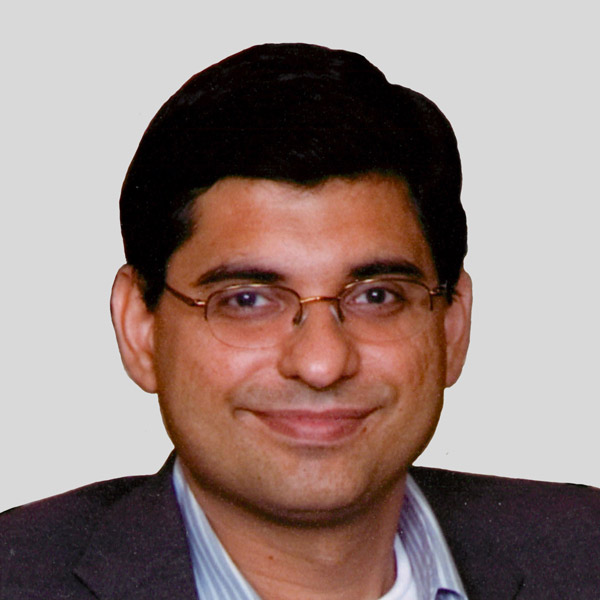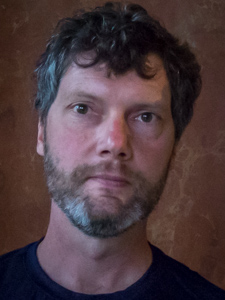Upgrading the Focuser of Your Schmidt-Cassegrain Telescope
- 1. Introduction
- 2. Microfocusers
- 3. External Focusers for Schmidt-Cassegrain Telescopes
- 3.1 The Basics of SCT Threads
- 3.2. Mounting and Using SCT Focusers
- 3.3 Types of External SCT Focusers
- 4. Selecting an External SCT Focuser
- 4.1 Telescope Backplate Considerations
- 4.2 Telescope Mount Considerations
- 4.3 Application Considerations
- 4.4 Increase in Operating Focal Length of Telescope
- 4.5 Possible Diagonal Considerations
- 4.6 Use of SCT Focal Reducers
- 5. Specifications and Features of Some Popular SCT Focusers
- 6. External SCT Focusers for Maksutov-Cassegrain Telescopes
- 7. Summary
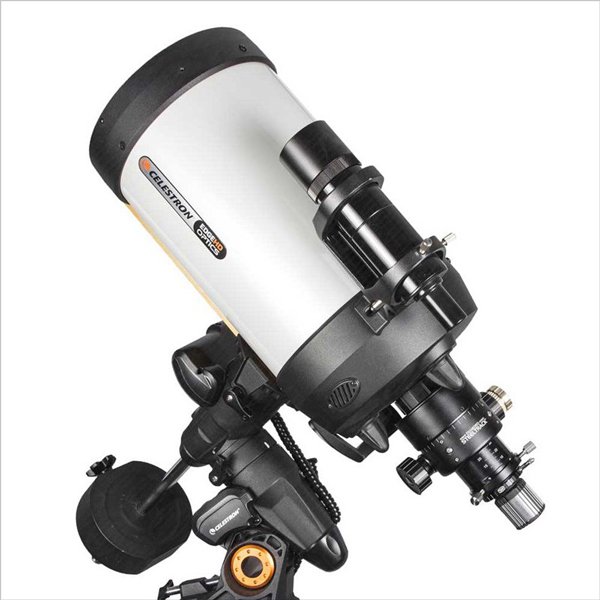
Figure 1 – A Schmidt-Cassegrain telescope (SCT) with an external focuser threaded onto the back of the telescope. Credit: Alpine Astro/Baader Planetarium.
1. Introduction
Refractors and Newtonian reflector telescopes come equipped with externally-mounted focusers that precisely position an eyepiece or camera near the focal plane of the fixed primary lens or mirror to achieve a sharp image.
Schmidt-Cassegrain telescopes, however, are a little different. They use a single external focusing knob attached to an internal mechanism that moves the primary mirror itself, at the back of the tube, to focus the image. This clever scheme has the advantage of keeping most of the focusing mechanism inside the telescope itself, out of harm's way. It results in the modest convenience of a stationary eyepiece position during focusing. It also allows a very large range of focus that accommodates the extra path length of binoviewers and other accessories as well as the ability to focus on terrestrial objects relatively easily.
But standard focusers for SCTs have two main disadvantages. For some observers, the standard focusing mechanism for SCTs is somewhat coarse, exhibits backlash (play in the focus gears), and only operates at a single 'speed' without any fine control of the focus position. A more serious drawback for SCT focusers, however, especially for astrophotographers, is image shift. This is a consequence of the geometry of the focusing mechanism. The focusing knob of an SCT is located off to the side of the primary mirror, and as it's turned a rod pushes the mirror near its edge to displace it. However, the mirror itself is held near its center on a long baffle tube. So when the knob is turned, the mirror tilts slightly. This results in a movement of the image in the eyepiece or on the camera sensor. It's easy to see visually and it can be annoying when observing at high magnification. And when trying to focus using small sensors at long focal ratios, the image can shift all the way off the sensor!
(NOTE: Image shift, sometimes called focus shift, is different than another problem sometimes seen in SCTs, namely mirror flop. This occurs when the primary mirror tilts slightly as the telescope tube itself is moved, especially if it's moved through the meridian. This is not an issue related to the focusing mechanism of the telescope. Astrophotographers can avoid this problem by refraining from imaging objects that cross the meridian during an exposure. Some modern SCTs eliminate mirror flop by adding a locking mechanism that holds the mirror in place.)
To improve the experience of focusing with an SCT, many observers turn to an upgraded focusing mechanism. There are two main options available:
- Microfocusers, which are precision mechanical devices that replace the stock SCT focuser knob. They do not solve the problem of image shift, but they improve focus accuracy and reduce backlash
- External focusers, which are similar to the focusers on refractors and Newtonians. These focusers thread on to the back of the telescope; coarse focus is achieved with the stock focusing knob, and fine focus is achieved with the external focuser
2. Microfocusers
For visual observers, microfocusers are a big improvement over stock focusers. These lightweight devices replace the stock focusing knob on an SCT and provide a smooth, precise, two-speed mechanical focusing mechanism that can be manually adjusted while minimizing vibrations of the telescope tube. The primary supplier of microfocusers for SCTs is Starlight Instruments. Their Feather Touch focusers, which come in a variety of configurations to fit nearly all SCTs, are an ideal retrofit for visual observers looking to upgrade their scopes without adding much weight or size.
Agena AstroProducts carries a wide range of Feather Touch microfocusers for Schmidt-Cassegrain telescopes.

Figure 2 – A Starlight Instruments microfocuser for a Schmidt-Cassegrain telescope, shown by itself (left) and mounted on an SCT (right). Credit: Starlight Instruments/Feather Touch.
Removing your stock SCT focuser and installing a Feather Touch microfocuser is usually a do-it-yourself job. It requires simple tools and takes only a few minutes. Detailed instructions are available at the Starlight Instruments website.
The advantages of a microfocuser come with a price, however. Most Feather Touch focusers cost between $300-$350. But nearly every observer who installs one of these devices is pleased with their performance. They are also less expensive than many external focusers of similar build quality.
3. External Focusers for Schmidt-Cassegrain Telescopes
3.1 The Basics of SCT Threads
Before discussing the many external focusers available, it helps to understand a little about the thread configurations of SCT telescopes and how they affect the choice of an external focuser. Most SCT scopes come with one of thefollowing thread configurations:
- On Meade SCTs from 6" to 10" aperture, and on Celestron SCTs from 5" to 9.25" aperture (except 9.25" Edge HD OTAs), the threads are 2" in diameter with a pitch of 24 TPI (threads per inch). Some larger Orion and Sky-Watcher Maksutov-Cassegrain scopes also use this configuration.
- Meade SCTs of 12" and greater aperture use 3.25" threads on a 16TPI pitch.
- Celestron's 9.25" Edge HD OTAs and SCTs of 11" and greater aperture use 3.28" threads on a 16TPI pitch.
The slight difference in thread diameter between the larger Meade and Celestron scopes is a source of confusion and frustration. Some third-party vendors make focusers for one size or the other. William Optics and Baader Planetarium, for example, make external focusers with a 3.28" thread to fit the larger Celestron scopes. However, these focusers usually work with the smaller 3.25" Meade thread without trouble, especially if the threads on the Meade scope are shimmed with a couple of turns of Teflon plumbing tape to ensure a good fit.
The 2" SCT thread is, in fact, generally considered as a "standard" SCT thread since virtually all SCT diagonals and most other accessories such as focal reducers or SCT prime-focus imaging adapters use this thread. The 3.25"/3.28" thread are commonly referred jointly to as a 3.25" SCT thread.
Both the larger Meade and Celestron scopes with 3.25" or 3.28" threads come with a reducing adapter to convert the larger thread to the smaller 2"x24 TPI male SCT thread. That means they can be used with smaller external focusers. However, to make use of the maximum clear aperture of the telescope, it's best to use larger focusers for larger SCT scopes.

Figure 3 – Three external SCT Crayford focusers showing the different SCT thread sizes. At left is a GSO focuser featuring a 2" SCT female thread. At center and right are larger William Optics SCT focusers. In the center focuser, the larger 3.28" thread has been reduced to the smaller 2" thread with the use of a mounted adapter. In the focuser at right, the reducing adapter for the large 3.28" SCT thread has been removed. All focusers in this figure have a drawtube to accept 2" diagonals and accessories. Credit: Agena AstroProducts/Sergio Castillo.
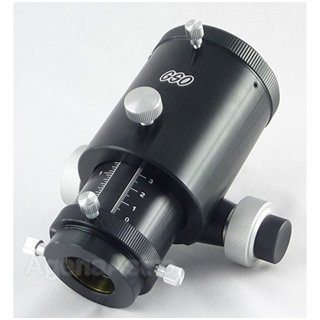
Figure 4 – The GSO linear bearing dual speed Crayford focuser for SCTs. Credit: GSO.
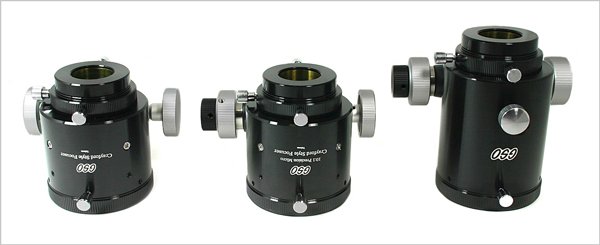
Figure 5 – Three popular external SCT Crayford focusers manufacturer by GSO of Taiwan. The focuser at left is the most basic single speed version. The focuser in the center is similar, but it includes a dual speed focus option. The focuser at right is a longer dual speed linear bearing focuser, the same focuser as shown in Figure 4. Credit: AgenaAstroProducts/Sergio Castillo.
3.2. Mounting and Using SCT Focusers
Unlike the case with microfocusers, there are many choices of brands and configurations for external focusers for Schmidt-Cassegrain telescopes. Many are reasonably priced, and they are very easy to install. You simply unscrew the 1.25" visual back from the 2" threads on the rear of the telescope (or the 3.25"-to-2" reducing adapter, if present, on the larger scopes). The external focuser assembly then threads directly onto the 2" or the 3.25"/3.28" male SCT threads on rear of the telescope.
External focusers designed for SCTs have a short overall length so they can swing through the fork mount of the telescope. Most have a range of focus travel of only about 1" compared to the 2"-3" of travel found on similar refractor or Newtonian reflector focusers. This is not a problem with SCTs, however, because you can first make a coarse focus adjustment with the stock focuser knob of the telescope, and then make a fine focus adjustment with the external focuser. Since external focusers eliminate image shift, they are ideal for visual observers and astrophotographers alike.
3.3 Types of External SCT Focusers
Most options for external focusers are of the Crayford style design, although some rack-and-pinion focusers are also available. There are offerings from GSOand Antares(only for 2" threads) and from Baader Planetarium and William Optics (for 3.25"/3.28" threads including an adapter for 2" threads)(see Figure 3). MoonLite Telescope Accessories offers separate 2" and 3.25" SCT focusers. Feather Touch takes a slightly different modular approach – they make a variety of focuser bodies and allow the user to pick one of dozens of adapters to couple the focuser to their SCT or any other telescope.
Most of these focusers are available in prices ranging from about $100 to over $500. The offerings differ in the types of bearings used, the load capacity, and tube size. There are single-speed and dual-speed focusers, standard Crayford or beefier linear bearing focusers, and some can even be motorized for finer and automatic control with kits from their respective manufacturers or withafter-market kits from Rigel and JMI, for example.Virtually all SCT focusers are rotatable to allow the adjustment of the orientation of your diagonal or camera field of view, and they have a focus lock mechanism for imaging applications.

Figure 6 – A Baader SCT focuser with Steel drive Motor System upgrade. The motor module interfaces with a computer or hand controller (not shown). Credit: Baader Planetarium.
4. Selecting an External SCT Focuser
Adding an external focuser to an SCT is a worthwhile upgrade. But which focuser should you select for your telescope,and will it fit? Your selection of an external focuser will essentially depend on three key factors:
- The size and layout of the backplate of your SCT
- Your telescope mount - whether your SCT is fork-mounted or sits on a GEM (German Equatorial Mount)
- Your primary intended application – whether visual observing or imaging These factors, as well as some disadvantages of external focusers, are discussed below.
4.1 Telescope Backplate Considerations
Before purchasing a focuser, you must ensure it's not too big to fit on the rear of your telescope. If it is, the telescope's main focus knob will get in the way of mounting the focuser.

Figure 7 – A schematic diagram of the rear view of an SCT or Maksutov-Cassegrain telescope showing the diameter of the focuser and how it might impinge on the focus knob.

Figure 8 – A schematic diagram of the top view of an SCT or Maksutov-Cassegrain telescope showing the clearance of the focuser knob of the telescope with the focuser knob of an external Crayford focuser.
Figures 7 and 8 will help you understand the measurements to ensure a focuser will fit a particular telescope. In these figures:
C = Distance of the main focus knob from the center of the telescope backplate
L = Length of the main focus knob on the telescope
D = Main body diameter of the external Crayford focuser
R = The distance by which the focuser's coarse focus knob is recessed from the front (telescope-end) of the focuser
For a given focuser to fit on your telescope, you will need to ensure that:
(1) D < 2C so that the focuser body is not too wide
(2) R > L so that the focus knobs do not hit each other
If the first condition above is not met, you cannot install an external Crayford focuser on your telescope. This measurement step is especially critical for telescopes that are smaller than 8" in aperture because the built-in focuser knob might be too close to the SCT threads to prevent the mounting of an external focuser. This is rarely an issue with 8" or larger telescopes, however.
The second condition, R>L, ensures that the focus knobs on the focuser and telescope do not hit or interfere with each other when the focuser is mounted. If you plan to attach an external motor to control your Crayford focuser, be sure to account for the additional clearances that might be required.
In some cases, if R>L is not satisfied, it may be possible to rotate the focuser and offset it by a few degrees so that the focuser's knobs are set at a slight angle to the horizontal position. This is easy for some focusers that have a rotating mounting ring on the front side facing the telescope. For example, all GSO SCT focusers feature this capability. However, if the SCT focuser body cannot be rotated and is bolted on to the mounting ring, which is the case with William Optics, Baader, Antares, and Feather Touch focusers, then you will have to separate the focuser's mounting ring from its main body, screw it on to your SCT first, and then bolt the focuser body to the mounting ring at the proper orientation.
In such cases, you may be wondering if you can simply insert an SCT-threaded spacer between the telescope and the focuser to satisfy the R>L condition. Unfortunately, this is seldom feasible in practice since the heavy weight of the focuser and accessories may create enoughtorque to unravel the connection. This spacer would also increase the effective focal length of the telescope (discussed in section 4.3 below).
4.2 Telescope Mount Considerations
Before selecting a focuser, if you use a fork-mounted SCT, it's important to carefully measure the available fork clearance. That is the distance from the SCT threads on the rear of the telescope tube to the base of the fork mount with the telescope tube pointed parallel to the arms of the fork (which means straight up in the case of an alt-azimuth fork mount). This is especially critical if you use a 2" diagonal with your telescope. Because of the limited fork clearance, especially on the smaller-aperture SCTs, you will be restricted in your choice of focuser and its range of use. For such situations, select the shortest possible focuser and use a 1.25" diagonal and eyepieces.
It's easy to determine whether a given configuration of focuser-plus-diagonal will clear your telescope's fork.

Figure 9A – A schematic showing the available fork clearance 'F'.

Figure 9B – A schematic diagram of an external SCT Crayford focuser, eyepiece adapter, and diagonal showing the dimensions that are relevant to fork clearance.
If F is your available fork clearance, then:
F > (X + Y + Z + M)
Where:
X = Minimum height (length) of external Crayford focuser
Y = Optical path length of your 1.25" eyepiece adapter (if used)
Z = Horizontal length of the diagonal body
M = A safety margin. This should ideally be equal to half your focuser's available drawtube travel, but should be 0.5" at the very minimum to give you some room to tweak your focus.
Some SCTs will have trouble clearing the fork with an external focuser, even if you usea smaller 1.25" diagonal, so you have to be prepared to give up on observing objects that are without 10 degrees of the direction in which the tube and fork arms are parallel. With an altazimuth fork mount, for example, that means you won't be able to observe objects with an elevation greater than about 80 degrees.

Figure 10 – A GSO Crayford focuser and 2" diagonal mounted on a fork-mounted Meade SCT. Note the insufficient fork clearance with the diagonal hitting the base. This configuration would be very tight even with a smaller 1.25" diagonal. Note also that the focus knob of the external Crayford focuser just barely clears the telescope's focus knob. Credit: Agena AstroProducts/Manish Panjwani.
If your telescope is equatorially mounted, the length and size of the focuser is not an issue.Selecting a longer focuser in such cases also provides the benefit of a longer drawtube with greater range of focus travel.
It's also important to make sure your telescope and mount can support the extra weight of a focuser on the back of the scope. SCT focusers weigh only one to two pounds, so this is usually not a problem unless your mount is close to capacity.The tube of most SCT telescopes is robust enough to hold a focuser.
4.3 Application Considerations
If you are primarily a visual observer who uses 1.25" diagonals and accessories or a 2" diagonal with smaller eyepieces, a basic and economical Crayford focuser might be all that you need. These focusers are a joy to use, especially if you've never used a Crayford focuser before. A single speed focuser will also suffice for many users, but if you can spend a few extra dollars, a dual speed focuser is certainly well worth the upgrade. GSO's standard Crayford focusers are a great entry-level option that are extremely popular.
Visual observers who use 2" diagonals with heavy eyepieces, or imagers who use larger DSLRs or dedicated CCD cameras, however, need to be aware of two limitations of the basic Crayford design.
First, because the focuser drawtube pivots on roller bearings, it is susceptible to focuser slop (tilt in the drawtube) when extended, especially with heavier loads. This could tilt your camera's image plane and ruin the focus across the field.
Second,basic Crayfords are limited in their load carrying capacity. At heavier loads and higher elevations, the microfocuser knob might slip internally and lose its microfocusing capability.
To counter these possible drawbacks, imagers generally opt for a linear bearing Crayford focuser or a rack-and-pinion focuser. In a linear bearing focuser, a very well-machined linear steel rail slides in a captive channel to eliminate focuser slop. Due to greater friction and larger contact surface between the rail and the bearings, these focusers have heavier load lifting capacity and a greater range of microfocuser operation. GSO's linear bearing focuser and the SCT focuser offerings from William Optics and Baader Planetarium are popular. However, be aware that while these focusers can lift heavier loads, their focus motion is not as fluid and smooth, and it is common for them to have a stiff spot or two over their range of focus travel.

Figure 11 – A GSO linear bearing focuser (left) with a steel rail and a William Optics R&P focuser (right; now discontinued). Credits: Agena AstroProducts and William Optics.
However, if money is no object, then a Feather Touch or MoonLite focuser might be the best choice. Both companies have a well-deserved reputation for making very high-end, exquisitely machined focusers that can easily work in the most demanding applications.
4.4 Increase in Operating Focal Length of Telescope
Adding an external focuser increases the optical path length, which in turn increases the focal ratio of an SCT slightly. As a rule of thumb, on a typical SCT, each additional millimeter added to the position of the focal plane behind the telescope adds about 3.1mm in focal length. For example, assume you have an 8" f/10 SCT with a focal length of 2030mm. The addition of GSO's Crayford focuser, with a physical operating length of approximately 122mm (4.8"), will add 378mm to the focal length. This effectively increases the focal ratio to f/11.8. This means that all your magnifications will be approximately 18% higher and slightly longer equivalent exposures will be required during imaging. The impact on larger, longer focal length SCTs will be smaller, but it is significant nonetheless.
4.5 Possible Diagonal Considerations
If you use the stock 1.25" refractor-type star diagonal that came with your SCT, you can use it in your new SCT focuser assuming that your focuser comes with a 2"-1.25" eyepiece adapter. However, if you switched to using an SCT-type 2" diagonal, one that directly threads onto the back of the telescope, you now have a problem. That's because once you mount the external SCT focuser on your telescope, you no longer have access to the male SCT thread to mount the SCT diagonal. With the focuser mounted, you now have a2" opening that can only accept diagonals with an unthreaded refractor-type 2" nosepiece. The solution? You will need to change the threaded SCT adapter on the telescope side of your diagonal to a standard unthreaded 2" nosepiece. This can be done with many- but not all - 2" SCT diagonals such as those from GSO and William Optics.
4.6 Use of SCT Focal Reducers
The use of focal reducers can also be affected when using an external focuser. For example, the commonly used 0.63x SCT focal reducer (offered by Meade, Celestron, and others) or the larger 0.7x Celestron EdgeHD reducer will not work optically with an external focuser because it cannot be placed at the required working distance in front of the eyepiece or cameras where it was designed to operate. The external focuser adds too much optical path length in between the focal reducer and eyepiece or camera, and it results in significantly deteriorated optical performance.
In this case, the only option for most users is to employ a 1.25" or 2" reducer that sits between the focuser and the camera or eyepieces. These reducers are usually 0.5x. GSO has 0.5x focal reducers with both barrel sizes that will work with external focusers. However, for users of 0.63x focal reducers, MoonLite offers a very ingenious solution – the focal reducer can be mounted inside their SCT focuser, directly on to the focuser drawtube. The reducer travels with the focuser tube as it is racked back and forth, thus maintaining the correct working distance at all times.
5. Specifications and Features of Some Popular SCT Focusers
The table below summarizes some of the specifications and key features of popular and complete 2" SCT focusers offered by Agena.At this time, we are not aware of any manufacturer that makes a 1.25" SCT Crayford focuser.
| Brand | Model | Agena Part and Link | Design | Speed | Focus Ratio | Mounting Thread | Rotatable? | 1.25" Adapter |
|---|---|---|---|---|---|---|---|---|
| GSO | 2" Single Speed Crayford | PAF-GS-SCT-SS | Crayford | Single | n/a | 2"x24 TPI | Yes | Yes |
| GSO | 2" Dual Speed Crayford | PAF-GS-SCT001 | Crayford | Dual | 1:10 | 2"x24TPI | Yes | Yes |
| GSO | 2" Dual Speed Linear Bearing Crayford | PAF-GS-LBSCT | Linear Bearing Crayford | Dual | 1:10 | 2"x24TPI | Yes | Yes |
| Antares | 2" Dual Speed SCT Focuser with Gear Drive | PAF-AN-FOC2GLP-SCT | Linear Bearing Crayford | Dual | 1:11 | 2"x24TPI | No | Yes |
| Baader | 2" Diamond Steeltrack Dual Speed Crayford | PAF-BP-BDS-SC | Linear Bearing Crayford | Dual | 1:11 | 3.28"x16TPI with 2"x24TPI reducing adapter | No | No |
| William Optics | 2" Victory Edition Dual Speed Crayford | PAF-WO-F2.0B-VPSCT | Linear Bearing Crayford | Dual | 1:10 | 3.28"x16TPI with 2"x24TPI reducing adapter | No | Yes |
| Brand | Model | AgenaPart # and Product Link |
Drawtube Travel (mm) | Weight (lbs-oz) Without 1.25" Adapter |
Min. Length (mm) | Max Body Dia. (mm) | Focus Knob Clearance (mm) |
|---|---|---|---|---|---|---|---|
| GSO | 2" Single Speed Crayford | PAF-GS-SCT-SS | 25 | 1lb-5.3oz | 99 | 84 | 36 |
| GSO | 2" Dual Speed Crayford | PAF-GS-SCT001 | 25 | 1lb-7.8oz | 99 | 84 | 34.5 |
| GSO | 2" Dual Speed Linear Bearing Crayford | PAF-GS-LBSCT | 51 | 1lb-12.5oz | 118 | 82 | 59.5 |
| Antares | 2" Dual Speed SCT Focuser with Gear Drive | PAF-AN-FOC2GLP-SCT | 22 | 1lb-16oz | 75 | 87 | 29.5 |
| Baader | 2" Diamond Steeltrack Dual Speed Crayford | PAF-BP-BDS-SC | 30 | 2lb-5.3oz | 90 | 96 | 37 |
| William Optics | 2" Victory Edition Dual Speed Crayford | PAF-WO-F2.0B-VPSCT | 31 | 2lb-4.2oz | 92.5 | 89 | 37 |
As mentioned in section 3.3 above, Feather Touch focusers can be combined with select mounting adapters for use with any SCT. Table 2 summarizes some popular combinations of 2" and 3" Feather Touch focusers. These are available in regular and short profile versions. All focusers in Table 2 are dual speed 10:1 focusers, and none include a 1.25" adapter.
| Brand | Model | AgenaPart # and Product Link | Design | Drawtube Travel (mm) | Mounting Thread |
|---|---|---|---|---|---|
| Feather Touch | 2" for SCTs up to 9.25" (Meade or Celestron) - Short (fork Mounted) | [A20-295]+[FTF2008BCR] | Linear Bearing Crayford | 20.3 | 2"x24TPI only |
| Feather Touch | 2" for SCTs up to 9.25" (Meade or Celestron) - Long (GEM Mounted) | [A20-215]+[FTF2015BCR] | Linear Bearing Crayford | 38.1 | 2"x24TPI only |
| Feather Touch | 2" for C11/C14 SCTs - Short | [A20-223]+[FTF2008BCR] | Linear Bearing Crayford | 20.3 | 3.29"x16TPI |
| Feather Touch | 2" for C11/C14 SCTs - Long | [A20-212]+[FTF2015BCR] | Linear Bearing Crayford | 38.1 | 3.29"x16TPI |
| Feather Touch | 3" for C11/C14 SCTs - Long | [A30-1903-7]+[FTF3015-BA] | R&P Crayford | 38.1 | 3.29"x16TPI |
| Feather Touch | 2" for Meade 10-14" SCTs - Short | [A20-214]+[FTF2008BCR] | Linear Bearing Crayford | 20.3 | 3.27"x16TPI |
| Feather Touch | 2" for Meade 10-14" SCTs - Long | [A20-213]+[FTF2015BCR] | Linear Bearing Crayford | 38.1 | 3.27"x16TPI |
| Feather Touch | 3" for Meade 10-14" SCTs - Long | [A30-1903-9]+[FTF3015-BA] | R&P Crayford | 38.1 | 3.27"x16TPI |
6. External SCT Focusers for Maksutov-Cassegrain Telescopes
Meade and Celestron SCTs with an aperture 5" or larger all feature the "standard" 2" SCT thread. So external SCT focusers can be used on any of them. The situation, however, is not as simple for Maksutov-Cassegrain telescopes because of the utter lack of standardization of the male mounting threads on the rear of these telescopes.
There are at least four different thread sizes on Maksutov-Cassegraintelescopes:
- The smallest scopes, such as the Celestron C-90 spotters, the Celestron Nexstar 4SE, or the Meade ETX scopes all use a small 1.375" diameter thread.
- Some intermediate sized Maks like the Celestron Nexstar 127 use a 44.5mm diameter thread that many refer to as a 'Maksutov thread'.
- A few less popular Maks have a T/T2 42mm photographic thread.
- A handful of large Maksutov telescopes, such as the Sky-Watcher 180mm Mak and others from Orion, feature the same 2" SCT threads discussed above. If you have these scopes, SCT focusers can easily be mounted on them.
For the other Maks with non-SCT threads, adapters are available to convert the native smaller male thread into a larger 2" SCT thread (see list below). But as with SCTs, clearance of the main focus knob can be a problem (see Section 4.1 above).
A) Conversion adapters from 1.375" NX4/ETX threads to 2" SCT threads
B) Conversion adapter from 44.5mm Maksutov threads to 2" SCT threads
C) Conversion adapters from 42mm T/T2 threads to 2" SCT threads
7. Summary
Stock focusers of Schmidt-Cassegrain telescopes have two main drawbacks: a somewhat coarse single-speed focusing mechanism with some backlash, and image shift. This article has described the many options available to visual observers and astrophotographers to upgrade from a stock SCT focuser. Visual observers can replace the stock focuser with a Feather Touch microfocuser from Starlight Instruments. Or they can add an external low-profile Crayford-style focuser to the back of their telescope for fine focusing control. Imagers are better served by an external focuser, one that's sturdy enough with sufficient load capacity to hold a camera and accessories.External focusers can add weight to a telescope, and they do slightly increase the effective focal ratio of an SCT. They also may have trouble making the clearance of a fork-mount, especially in smaller scopes. But when chosen according to the guidelines in this article, a microfocuser or an external focuser are excellent upgrades to most types of Schmidt-Cassegrain telescopes.






